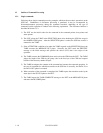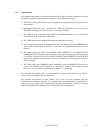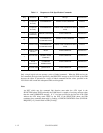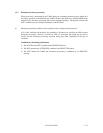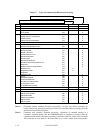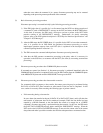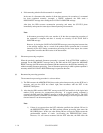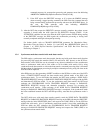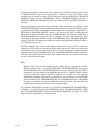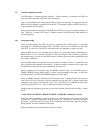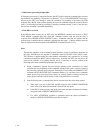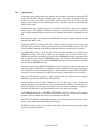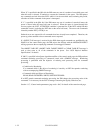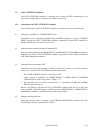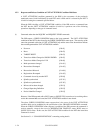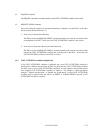C141-E124-01EN1 - 18
The data transfer mode set with the INIT once is effective until a RESET condition occurs or until
a TARGET RESET message is issued by any INITs. Therefore, in order for the INIT to avoid
overhead time for message exchange, the INIT should not send the WIDE DATA TRANSFER
REQUEST message and the SYNCHRONOUS DATA TRANSFER REQUEST message or
PARALLEL PROTOCOL REQUEST message to the TARG each time the SELECTION phase is
executed.
When the requesting synchronous mode transfer/wide mode data transfer by specifying of the
CHANGE DEFINITION command (synchronous mode transfer/wide mode data transfer request)
is permitted, and the IDD is maintaining the default transfer mode (asynchronous, 8-bit width), if a
WIDE DATA TRANSFER REQUEST message is not sent from the INIT, the IDD enters the
MESSAGE IN phase immediately after the COMMAND phase and sends the WIDE DATA
TRANSFER REQUEST message to the INIT for attempting to set the 16-bit width mode. After
establishing the bus width, the IDD sends the SYNCHRONOUS DATA TRANSFER REQUEST
message to the INIT and attempts the synchronous mode transfer parameters (REQ/ACK offset =
127, Transfer period = 25 ns).
The IDD maintains data transfer mode settings between itself and each INIT individually.
Therefore, an INIT which uses asynchronous mode transfer and an INIT which uses synchronous
mode transfer can both coexist on the same SCSI bus. Also, the parameters for synchronous mode
transfers decided by the SYNCHRONOUS DATA TRANSFER REQUEST message can differ for
each INIT and an INIT which uses the 8-bit width transfer mode can coexist with an INIT which
uses the 16-bit width transfer mode.
Note:
When the INIT issues the first command after the TARG’s power is switched on, or after a
RESET condition occurs, it can send the WIDE DATA TRANSFER REQUEST message and
the SYNCHRONOUS DATA TRANSFER REQUEST message. However, when the TARG is
set internally on a data transfer mode established previously by a TARGET RESET message
issued by another INIT, generally, the INIT is not aware of it. In such case, when requesting
synchronous mode/wide mode transfer is permitted by the specification of the CHANGE
DEFINITION command (synchronous mode/wide mode transfer request), the TARG (IDD)
sends the WIDE DATA TRANSFER REQUEST and SYNCHRONOUS DATA TRANSFER
messages to establish the synchronous mode/wide mode transfer again. Thus, the INIT shall
respond to these messages for setting necessary parameters again.
See “CHANGE DEFINITION” in Section 3.1.4, SCSI Bus (INFORMATION TRANSFER Phase)
in Chapter 1 and SCSI Messages (SYNCHRONOUS DATA TRANSFER REQUEST, WIDE
DATA TRANSFER REQUEST, PARALLEL PROTOCOL REQUEST) in Chapter 2 of “SCSI
Physical Interface Specifications” for further details.



